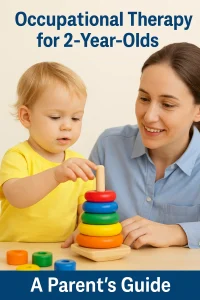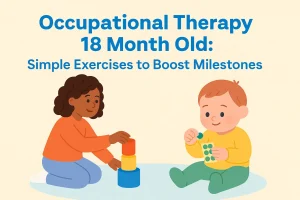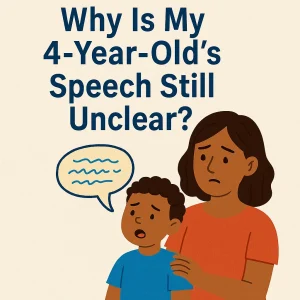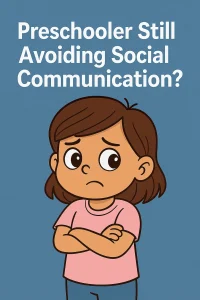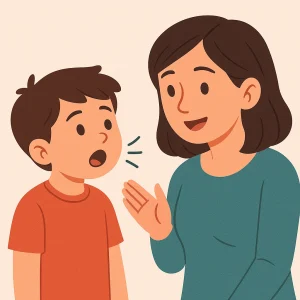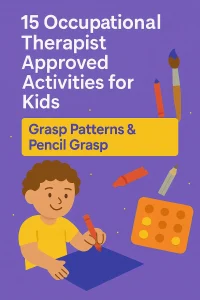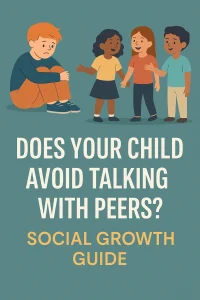Understanding and Managing Speech Cluttering in Individuals
Last Updated: September 11, 2024
Have you ever heard of speech cluttering? If not, you’re not alone. Speech cluttering is a lesser-known fluency disorder that affects how people communicate. Unlike the more commonly known stuttering, cluttering involves a rapid or irregular speech pattern that can make it difficult for listeners to understand. Imagine trying to follow a conversation where the words come out in a rush, often jumbled together or with awkward pauses. This can be frustrating not only for the person experiencing it but also for those trying to communicate with them.
What is Speech Cluttering?
Defining Speech Cluttering
Speech cluttering is a fluency disorder characterized by a rapid and irregular speech rate, leading to disorganized communication. Individuals with this condition often speak quickly, making their speech difficult to understand. Unlike stuttering, which involves repeated sounds or blocks, cluttering results in speech that sounds rushed and jumbled, with uneven pauses and irregular rhythm.
How Speech Cluttering Differs from Stuttering
Although both speech cluttering and stuttering are fluency disorders, they have distinct differences:
- Awareness: People who stutter are usually aware of their speech difficulties, whereas individuals who clutter often do not realize there is a problem.
- Speech Pattern: Stuttering typically involves the repetition of sounds, syllables, or words, along with blocks and prolongations. Cluttering, on the other hand, is characterized by a rapid, erratic speech pattern with frequent revisions and filler words.
- Speech Content: Those who stutter generally have clear content but struggle with fluency. Clutterers often have disorganized thoughts, leading to speech that is not only rapid but also confusing and hard to follow.
Common Symptoms and Characteristics
Speech cluttering manifests in various ways, affecting both the speaker’s fluency and clarity. Here are some common symptoms and characteristics:
- Rapid Speech: Individuals with cluttering often speak too quickly, making it hard for listeners to catch all the words.
- Irregular Speech Rate: The speech rate can be uneven, with sudden bursts of fast talking followed by slower speech.
- Dysfluencies: Frequent interruptions such as pauses, prolongations, and repetitions are common.
- Over-Articulation: Sometimes, there is an abnormal emphasis on certain sounds, which can distort words.
- Monotonous Speech: Cluttering often results in speech that lacks variation in pitch and tone, making it sound flat.
- Disorganized Language: There may be difficulty organizing thoughts, leading to jumbled sentences and unclear messages.
- Poor Intelligibility: Speech may sound slurred or mushy, making it hard for others to understand.
Also read: What is the Relation between Communication, Speech and Language? | Speech and Language Therapy
Symptoms of Speech Cluttering
Recognizing the symptoms of speech cluttering is crucial for early intervention and effective management. Here, we’ll discuss the primary and additional symptoms that characterize this fluency disorder.
Primary Symptoms of Cluttered Speech
- Rapid Speaking Rate
- Individuals with speech cluttering often speak at a very fast pace. This rapid rate can make it challenging for listeners to follow the conversation and catch all the words. The speed can result in speech that seems rushed and breathless.
- Over-Articulation of Words
- Over-articulation refers to the excessive emphasis on certain sounds within words, making the speech sound unnatural. This can distort the words and make them harder to understand. For example, a person might stress every syllable in a word equally, rather than following the natural rhythm of speech.
- Jerky or Monotonous Speech
- Speech may come out in spurts, with sudden pauses that break the flow of communication. This jerky pattern can be disconcerting for listeners. Alternatively, the speech might lack variation in pitch and tone, resulting in a monotonous delivery that can make the speaker harder to follow.
- Dysfluencies
- Dysfluencies in speech cluttering include prolongations (stretching out sounds), pauses, blocks (getting stuck on a sound or word), and repetitions. These interruptions can make the speech sound disjointed and difficult to understand. Unlike stuttering, these dysfluencies are often combined with the rapid and irregular rate of speech.
Additional Characteristics of Speech Cluttering
- Phonological Errors
- Individuals with cluttered speech might make errors in the sounds of speech. They might omit certain sounds, substitute one sound for another, or distort sounds, leading to misarticulations. These phonological errors can further reduce speech intelligibility.
- Disorganized Language
- Disorganized language is a hallmark of speech cluttering. Speakers might struggle to organize their thoughts coherently, leading to jumbled sentences and unclear messages. This can make conversations confusing and hard to follow.
- Poor Speech Intelligibility
- The combination of a rapid speaking rate, over-articulation, dysfluencies, and phonological errors often results in speech that is difficult to understand. Poor speech intelligibility means that listeners have to work harder to decode the speaker’s message, which can be frustrating for both parties.
Read more: Understanding Speech Delay: Causes, Milestones, and Therapy
Causes of Speech Cluttering
Understanding the causes of speech cluttering can be challenging due to the lack of concrete evidence. However, researchers have identified several potential factors that may contribute to this fluency disorder.
Neurological Factors
One of the primary theories suggests that speech cluttering may be related to neurological factors. Specifically, dysregulation in the brain’s speech center can lead to rapid and irregular speech patterns that are characteristic of cluttering. This dysregulation affects the brain areas responsible for planning and executing speech, such as the anterior cingulate cortex and the supplementary motor area. When these areas do not function correctly, it can result in the disorganized speech patterns seen in individuals with cluttering.
1. Self-Regulation Factors
Another significant factor in speech cluttering is the individual’s ability to regulate their thoughts and speech. In many cases, there is a mismatch between the rate at which thoughts occur and the speed at which they are spoken. This lack of synchronization can cause a breakdown in fluency and intelligibility, leading to the rapid and jumbled speech typical of cluttering. Essentially, the person is speaking faster than their cognitive processes can manage, resulting in speech that is difficult to follow.
2. Genetic Components and Related Conditions
Research also suggests that genetic components may play a role in speech cluttering. Some studies indicate that cluttering can run in families, implying a hereditary aspect. Additionally, speech cluttering is sometimes associated with other conditions, such as Tourette’s syndrome, learning disorders, and attention-deficit/hyperactivity disorder (ADHD). These related conditions can compound the effects of cluttering, making it more pronounced and challenging to manage.
Diagnosing Speech Cluttering
Diagnosing speech cluttering accurately is crucial for effective treatment. A thorough evaluation by a speech-language pathologist (SLP) ensures that the specific needs of the individual are identified and addressed. Here’s what you need to know about the diagnostic process for speech cluttering.
1. Importance of a Thorough Evaluation
A comprehensive assessment by a speech-language pathologist is essential to differentiate speech cluttering from other fluency disorders, such as stuttering. This evaluation helps in understanding the extent of the disorder, identifying any co-occurring conditions, and formulating an effective treatment plan. Early and accurate diagnosis can significantly improve the management of speech cluttering, leading to better communication skills and enhanced quality of life.
The Typical Diagnostic Process
- Observing Speech Patterns: The first step in diagnosing speech cluttering involves observing the individual’s speech patterns. The SLP will listen to how the person speaks in various contexts, noting the rate of speech, the presence of dysfluencies, and any irregularities in speech rhythm and intonation. This observation helps in identifying the hallmark signs of cluttering, such as rapid speech, uneven pauses, and frequent interjections.
- Assessing Language and Phonological Skills: The next step is to assess the individual’s language and phonological skills. This involves evaluating how well the person constructs sentences, uses vocabulary, and pronounces words. The SLP may use structured tasks or spontaneous conversation to gauge these skills. Identifying phonological errors, such as misarticulations or omitted sounds, is crucial in diagnosing speech cluttering.
- Evaluating Attention and Self-Monitoring Abilities: An important aspect of speech cluttering is the individual’s ability to regulate their speech. Therefore, the SLP will also evaluate attention and self-monitoring abilities. This assessment helps determine if the person can control their speech rate and make corrections when they notice errors. Techniques may include tasks that require the individual to consciously slow down their speech or monitor their fluency in real-time.
Treatment and Management of Speech Cluttering
Managing speech cluttering effectively relies heavily on speech therapy. A speech-language pathologist (SLP) plays a crucial role in helping individuals with cluttering develop better communication skills. Here are some effective treatment methods that can make a significant difference.
Increasing Awareness and Self-Monitoring
One of the first steps in managing speech cluttering is to increase the individual’s awareness of their speech patterns. Since many people with cluttering may not realize there is an issue, drawing their attention to it is essential.
- Techniques to Draw Attention to Speech Patterns: The SLP may use recordings of the individual’s speech to help them hear and recognize their disfluencies. Visual aids, such as charts showing normal versus cluttered speech patterns, can also be useful. Encouraging self-monitoring helps individuals become more conscious of their speech rate and clarity.
Reducing Speech Rate
A common characteristic of cluttered speech is its rapid rate. Learning to slow down can greatly improve intelligibility.
- Using Analogies Like a Speedometer: The concept of a speech speedometer can be introduced, where a “speed limit” is set for speaking. This analogy helps individuals visualize and control their speech rate, ensuring they stay within a manageable range.
- Practicing Deliberate Pausing: Training individuals to deliberately pause between words or phrases can help in reducing the overall speech rate. Practicing these pauses can make the speech sound more natural and easier to understand.
Improving Articulation and Language Skills
Clear articulation and organized language use are crucial for effective communication. Speech therapy focuses on enhancing these skills.
- Structured Sentence Practice: Starting with simple, structured sentences and gradually moving to more complex ones helps individuals practice clear articulation. For example, beginning with sentences like “My name is John” before progressing to more abstract topics.
- Exaggerating Stressed Syllables: Practicing exaggeration of stressed syllables in words can improve clarity. For instance, pronouncing “particular” as “par-TIC-u-lar” ensures all syllables are distinctly heard.
Fluency Shaping Techniques
Various fluency shaping techniques can be employed to reduce dysfluencies and enhance speech fluency.
- Breathing Exercises: Teaching proper breathing techniques helps individuals manage their breath support while speaking, which can reduce interruptions and improve speech flow.
- Speaking with an Inner Voice: Encouraging individuals to think about what they want to say before speaking helps in organizing their thoughts. Speaking with an inner voice or rehearsing silently can also reduce the rapid, disorganized speech typical of cluttering.
Treatment Methods for Speech Cluttering
| Treatment Method | Description |
|---|---|
| Increasing Awareness | Techniques to draw attention to speech patterns and encourage self-monitoring. This includes using recordings of the individual’s speech and visual aids to help them recognize and understand their disfluencies. |
| Reducing Speech Rate | Strategies to slow down the speech rate, such as using analogies like a speedometer to visualize an appropriate speaking speed and practicing deliberate pausing between words and phrases to maintain a manageable pace. |
| Improving Articulation | Structured sentence practice to enhance clarity, starting with simple sentences and gradually moving to more complex ones. This also involves exaggerating stressed syllables to ensure each sound within a word is pronounced clearly. |
| Fluency Shaping Techniques | Techniques designed to improve the flow and fluency of speech, such as breathing exercises to manage breath support during speech and learning to speak with an inner voice to organize thoughts before speaking. |
Differences Between Cluttering and Stuttering
Understanding the differences between cluttering and stuttering is essential for accurate diagnosis and effective treatment. While both are fluency disorders, they have distinct characteristics that set them apart.
Awareness
- Clutterers: Individuals with speech cluttering often lack awareness of their disfluency. They may not realize that their speech is rapid or disorganized, which can make self-monitoring and improvement challenging.
- Stutterers: People who stutter are usually very aware of their speech difficulties. This awareness can sometimes exacerbate their anxiety about speaking, but it also means they can actively work on strategies to improve fluency.
Speech Content
- Clutterers: Those with cluttering may have disorganized thoughts, leading to speech that can be jumbled and hard to follow. They often struggle with organizing their language, which affects the clarity of their communication.
- Stutterers: Individuals who stutter generally know exactly what they want to say but struggle with the fluency of their speech. Their thoughts are typically clear, but the delivery is hindered by blocks, repetitions, and prolongations.
Speaking Rate
- Clutterers: Cluttering is characterized by an abnormal speaking rate, which is often rapid or irregular. This erratic pace can make it difficult for listeners to keep up and understand the speech.
- Stutterers: The speaking rate of those who stutter can vary. Some may speak more slowly due to blocks and repetitions, while others might speak faster as a secondary strategy to avoid stuttering moments. However, their rate is usually not as erratic as that seen in cluttering.
Articulation Errors
- Clutterers: Articulation errors are more common in cluttering. These can include misarticulations, where certain sounds are omitted or substituted, making speech sound unclear or slurred.
- Stutterers: Stuttering typically does not involve articulation errors. The primary issue is the disruption of speech flow, not the incorrect production of sounds.
Speech Intelligibility
- Clutterers: Due to the rapid rate and frequent articulation errors, clutterers often have poor speech intelligibility. Their speech can sound mushy or slurred, making it hard for listeners to understand.
- Stutterers: Speech intelligibility in stuttering is usually better than in cluttering. While the fluency is disrupted, the individual sounds are typically clear, and the listener can understand the intended message once the speech block is resolved.
Differences Between Cluttering and Stuttering
| Aspect | Cluttering | Stuttering |
|---|---|---|
| Awareness | Often lacks awareness of their disfluency. Individuals with cluttering may not realize that their speech is rapid or disorganized, making self-monitoring and improvement challenging. | Usually aware of their disfluency. Individuals who stutter are generally conscious of their speech difficulties, which can sometimes lead to increased anxiety about speaking. |
| Speech Content | Disorganized thoughts. Clutterers may struggle to organize their thoughts coherently, leading to jumbled and unclear speech. | Clear thoughts but disrupted speech flow. Stutterers typically know what they want to say but have difficulty executing smooth speech. |
| Speaking Rate | Rapid or irregular. Speech cluttering is often characterized by a very fast or uneven speech rate, which can make it difficult for listeners to follow. | Varies; can be normal, fast, or slow. The speech rate in stuttering can change, sometimes speeding up as an attempt to avoid blocks or slowing down due to effortful speech. |
| Articulation Errors | Common. People with cluttering often make articulation errors, such as omitting or distorting sounds, which contribute to poor intelligibility. | Rare. Articulation errors are less common in stuttering, where the primary issue is the flow of speech rather than the production of sounds. |
| Speech Intelligibility | Often poor. Due to rapid speech and frequent articulation errors, cluttered speech can be difficult to understand. | Generally better than in cluttering. While stuttering disrupts the flow, the individual sounds are typically clear, making the overall speech more intelligible once the blocks are overcome. |
Tips for Parents and Caregivers
If your child is experiencing speech cluttering, you can play a crucial role in their development and progress. Here are some practical tips for parents and caregivers to support a child with cluttering.
Early Intervention
Seeking help from a speech-language pathologist (SLP) as early as possible is vital. Early intervention can significantly improve outcomes for children with cluttering.
- Why Early Intervention Matters: The sooner a child receives professional support, the better their chances of developing effective communication skills. An SLP can provide a tailored therapy plan that addresses the specific needs of your child.
- Steps to Take: If you notice signs of speech cluttering, such as rapid or disorganized speech, contact a qualified SLP. They will conduct a thorough evaluation and suggest an appropriate treatment plan.
Encouragement and Patience
Supporting your child’s efforts and progress requires patience and positive reinforcement.
- Be Patient: Understand that improvement in speech clarity and fluency takes time. Avoid showing frustration, and instead, focus on the progress your child is making.
- Offer Encouragement: Praise your child for their efforts and achievements, no matter how small. Positive reinforcement boosts their confidence and motivates them to continue working on their speech.
Practice at Home
Engaging in speech exercises and activities recommended by the therapist can reinforce the skills learned during therapy sessions.
- Create a Practice Routine: Set aside a regular time each day to practice speech exercises with your child. Consistency is key to making progress.
- Make It Fun: Incorporate games and fun activities into speech practice to keep your child engaged and motivated. For example, you can practice deliberate pausing and speaking slowly through storytelling or reading aloud together.
- Monitor Progress: Keep track of your child’s progress and share any observations with the SLP. This information can help the therapist adjust the treatment plan as needed.
Conclusion
In this article, we have learned about speech cluttering, a fluency disorder that makes speech fast, irregular, and often hard to understand. We talked about what speech cluttering is, its symptoms, possible causes, and how it is different from stuttering. We also explained the importance of early diagnosis and effective treatment and provided helpful tips for parents and caregivers to support children with cluttering. Key points include recognizing the symptoms, understanding the potential causes, seeking early diagnosis, and using targeted treatments to improve speech clarity and fluency.
With the right support and intervention, people with speech cluttering can significantly improve their speech. It’s important to seek help from a speech-language pathologist if you or someone you know shows signs of cluttering. Early intervention can lead to better communication and a higher quality of life. For more information and resources, visit Wellness Hub. Our experts are here to provide personalized care and effective treatment plans to help you or your loved ones speak more clearly and confidently. Thank you for reading, and we hope this guide has been helpful. If you have any questions or need more assistance, please reach out to us at Wellness Hub.
Frequently Asked Questions:
1. What is speech cluttering?
Speech cluttering is a fluency disorder where an individual speaks rapidly and irregularly, making their speech difficult to understand. It involves disorganized speech patterns and frequent disfluencies such as pauses, repetitions, and prolongations.
2. How does speech cluttering differ from stuttering?
While both are fluency disorders, cluttering involves rapid, disorganized speech with little awareness of the problem, whereas stuttering involves repeated sounds or blocks with a higher awareness of the speech difficulty.
3. What are the common symptoms of speech cluttering?
Common symptoms include a rapid speaking rate, over-articulation of words, jerky or monotonous speech, and frequent dysfluencies like pauses and repetitions. Additional symptoms can include phonological errors and poor speech intelligibility.
4. What causes speech cluttering?
The exact causes are not well understood, but potential factors include neurological issues, self-regulation difficulties, and genetic components. Conditions like Tourette’s syndrome and learning disorders can also be related.
5. How is speech cluttering diagnosed?
Speech cluttering is diagnosed by a speech-language pathologist through a thorough evaluation process that includes observing speech patterns, assessing language and phonological skills, and evaluating attention and self-monitoring abilities.
6. Can speech cluttering be treated?
Yes, speech cluttering can be effectively managed through speech therapy. Treatment methods include increasing awareness and self-monitoring, reducing speech rate, improving articulation and language skills, and using fluency shaping techniques.
7. What are some effective treatments for speech cluttering?
Effective treatments include techniques to draw attention to speech patterns, practicing deliberate pausing, structured sentence practice, exaggerating stressed syllables, breathing exercises, and learning to speak with an inner voice.
8. Why is early intervention important for speech cluttering?
Early intervention is crucial as it helps address speech cluttering before it becomes more severe. A speech-language pathologist can provide tailored therapy that improves speech fluency and clarity, leading to better communication outcomes.
9. How can parents support a child with speech cluttering?
Parents can support their child by seeking early intervention from a speech-language pathologist, offering encouragement and patience, and engaging in speech exercises and activities recommended by the therapist.
10. Where can I find more information and resources about speech cluttering?
For more information and resources, visit the Speech Therapy page on the Wellness Hub website. Our experienced speech-language pathologists are here to provide personalized care and effective treatment plans.
About the Author:
Anuradha Karanam
Speech-language pathologist (7+ years of experience)
Anuradha Karanam is a skilled speech-language pathologist with over 6 years of experience. Fluent in Tamil, Telugu, Hindi, and English, she specializes in parent counseling, speech sound disorders, fluency assessment, and speech-language evaluations. Anuradha excels at working with children with developmental disorders, offering creative and effective therapy programs. Currently, at Wellness Hub, she holds a BASLP degree and is registered with the RCI (CRR No A85500). Her patience, ambition, and dedication make her a trusted expert in her field.
Connect with Anuradha to learn more about how she can help you or your loved one find their voice.
Book your Free Consultation Today
Parent/Caregiver Info:
Client’s Details:
* Error Message

